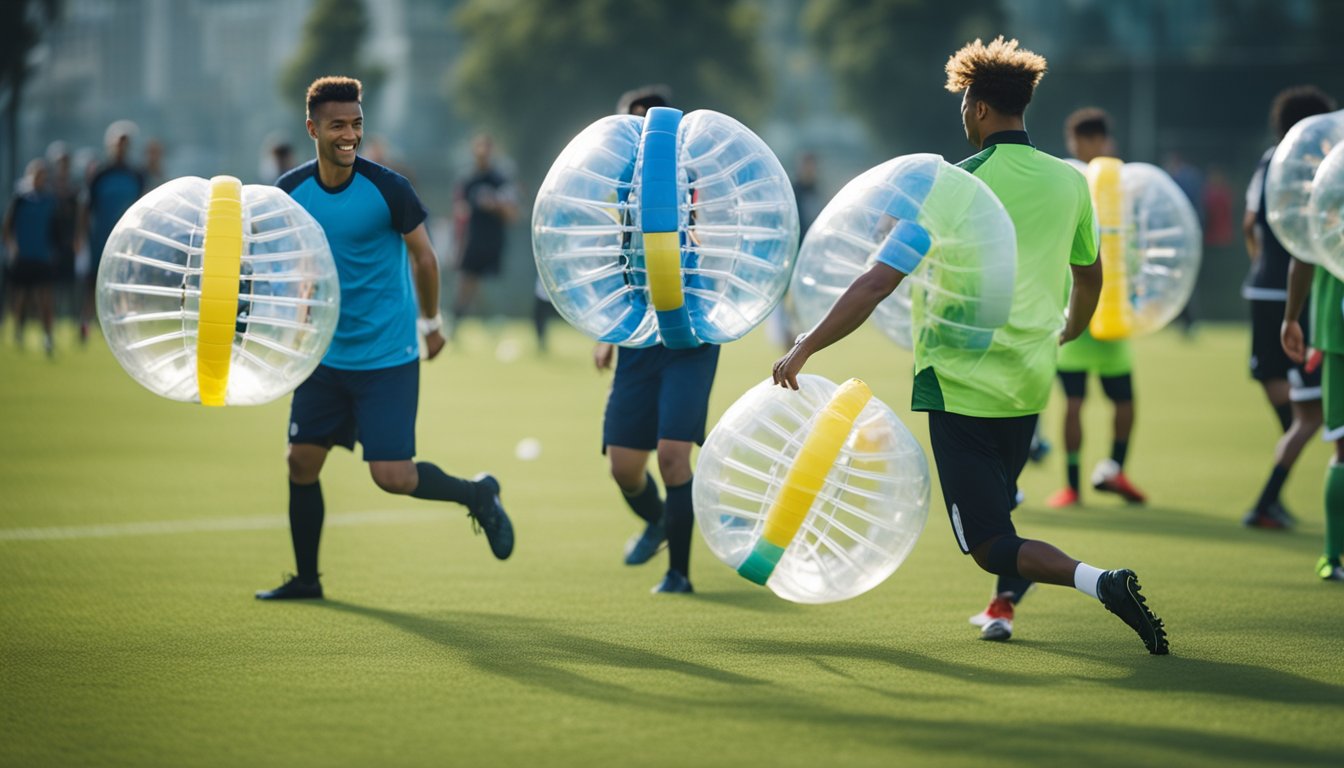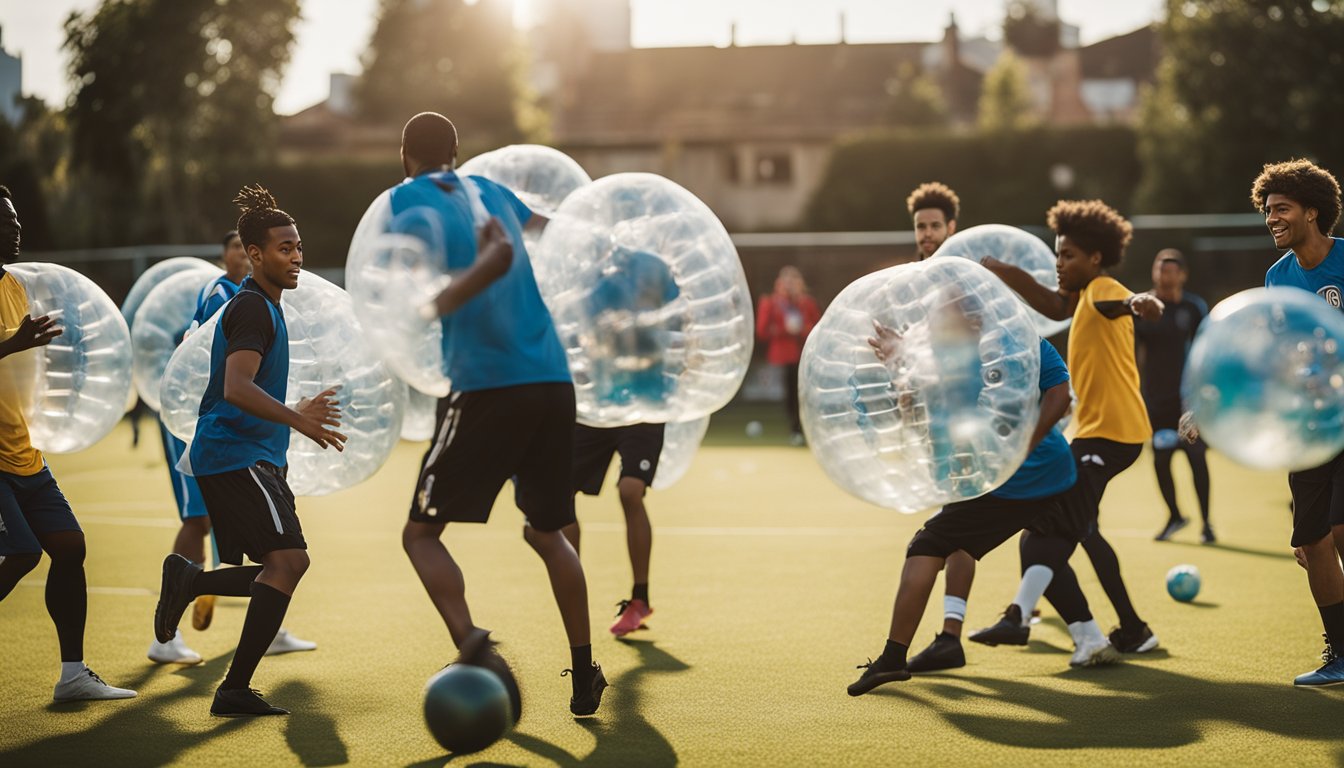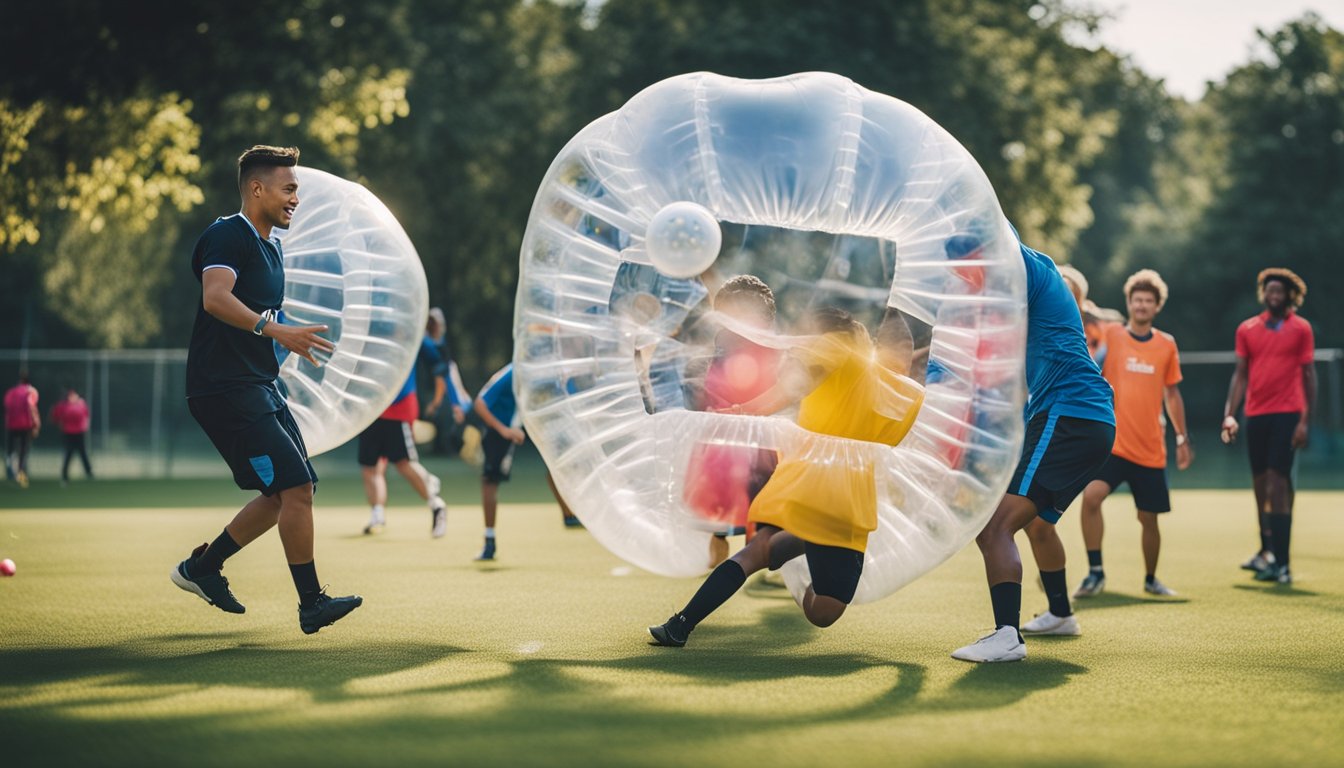Late updated: 01 Feb 2025 14:02
Written by: Emma Saunders
Exploring Bubble Football Across Different Cultures: A Global Perspective
Bubble football, also known as bubble soccer, offers an exhilarating twist on the beloved game we all recognise. This entertaining variant involves players encased in inflatable bubbles, adding a unique mix of fun and chaos to the traditional sport. Bubble football transcends borders, reflecting diverse cultural nuances and captivating audiences worldwide.

Our journey through bubble football reveals intriguing cultural exchanges and varying reception in different regions. Originating in Norway in 2011, the sport quickly gained popularity in Europe before captivating players and spectators globally. Through these encounters, we notice how regional interpretations shape and influence the experience of this amusing activity.
Exploring bubble football across cultures allows us to appreciate its universal appeal and the distinctive way it's embraced by communities worldwide. As we delve into this vibrant global phenomenon, we uncover the subtleties and tales behind a sport that unites laughter and competition.
Key Takeaways
- Bubble football offers a fun twist on traditional football.
- The sport originated in Norway and quickly spread worldwide.
- Cultural variations make each bubble football experience unique.
The Global Landscape of Bubble Football
Bubble football serves as a fascinating blend of traditional football dynamics and innovative gameplay, encapsulated within the international appeal of football. It highlights cultural diversity and unifies enthusiasts across continents through shared enjoyment and creative adaptation of conventional rules.
Cultural Significance of Football Across Continents
Football is not just a game; it's a crucial component of cultural identity across the globe. Each continent brings its unique flair to the sport, contributing to a rich tapestry of traditions and styles. From the vibrant football culture in South America to the strategic gameplay in Europe, these differences enhance the universal language of football. Football acts as a social equaliser, breaking down barriers and fostering global unity through international tournaments and local matches alike. It is also a powerful medium for cultural exchange, where different styles and approaches coalesce on and off the field.
Adapting Football Traditions to Bubble Football
With bubble football, traditional elements undergo a playful transformation. Bubble football has quickly carved out a niche by injecting fun into classic football. While the objective of scoring remains, the dynamic changes as players manoeuvre within inflatable bubbles, bringing a humorous twist. This adaptation allows diverse football cultures to express creativity while retaining the core elements of the game. Countries that cherish football traditions have embraced this variant as a novel way to engage younger audiences and promote physical activity. By blending established football customs with new, thrilling components, bubble football emerges as an inclusive, global phenomenon that resonates with fans worldwide.
Cultural Exchanges and the Growth of Bubble Football

Bubble football has emerged as a fascinating means of cultural exchange, blending sport with fun, creativity, and inclusivity. It encourages unity and a shared passion for football, fostering deeper connections between diverse communities. This section examines case studies from various regions and highlights the impact on community outreach and inclusivity.
Case Studies: Bubble Football in Diverse Settings
In Europe, bubble football has turned into a popular pastime, blending local traditions with the universal excitement for football. In Sweden, for example, it is increasingly used as a tool for youth engagement, creating an informal setting where cultural understanding and friendship thrive. Participants often report that the game breaks down barriers, as the fun and light-hearted nature encourage open interaction.
In Asia, bubble football has also gained traction as a novel recreational activity. In cities like Tokyo, it is used for corporate team-building events, fostering teamwork and effective communication. Such applications demonstrate the adaptability of bubble football to different cultural contexts, making it an invaluable tool for promoting unity. Its ability to bring people from different backgrounds together enhances cultural appreciation and diversity.
Impact on Community Outreach and Inclusivity
Bubble football's integration into community programmes highlights its effectiveness in promoting inclusivity. In the UK, schools and local councils use it to engage underserved communities, offering an accessible entry into the sport. This initiative fosters a sense of belonging and demonstrates the potential for sport to enact positive change.
Further, bubble football initiatives often include workshops and events focusing on inclusivity. These efforts aim to ensure everyone, regardless of age, ability, or background, can participate, thereby fostering an inclusive community spirit. These programmes underline how bubble football transcends traditional football by providing a non-threatening environment where all feel welcome and valued.
In essence, bubble football's growth in diverse cultural settings illustrates its ability to unite communities and promote inclusivity through shared passion and creativity.
Frequently Asked Questions

Exploring Bubble Football brings several common inquiries from origins to gameplay specifics. Each subtopic offers insights into different aspects, enriching our understanding of this unique sport.
What is the origin of Bubble Football?
Bubble Football was created by Norwegians with a humorous twist, combining football with inflatable bubbles. Initially a prank on television, it gained popularity after going viral online. Now, it's recognised as a unique sport with a playful approach.
Can you share some interesting trivia about bubble soccer?
This sport merges elements of zorbing with football, offering a distinctive way to enjoy the game. Players are encased in giant inflatable bubbles, which adds an element of fun and safety. Its appeal spans globally, emphasising a relaxed, entertaining experience.
What is the maximum number of participants in a Bubble Football match?
The number of participants can vary, but a standard game often includes ten players. However, flexibility exists, allowing fewer participants while maintaining the essence of the game. Team sizes can adjust based on specific event requirements or venue capacity.
What attire is appropriate for playing Bubble Football?
Players should wear comfortable, loose-fitting exercise clothing along with trainers. This ensures mobility and safety during the game. It’s important to prioritise comfort, given the physical activity involved, enhancing the overall enjoyment of the experience.
How do the rules of Bubble Football vary across different countries?
While core rules remain consistent—such as player encasement in bubbles and the absence of goalkeepers—variations exist based on local customs. Some regions might introduce specific adaptations to align with traditional football practices or cultural preferences, adding local flavour to the sport.
What equipment is essential for organising a Bubble Football game?
Key equipment includes inflatable bubble suits that encase players from the waist up. A suitable playing field, typically a five-a-side pitch, is also necessary. Additionally, basic football goals and a standard football complete the setup for a Bubble Football match.
